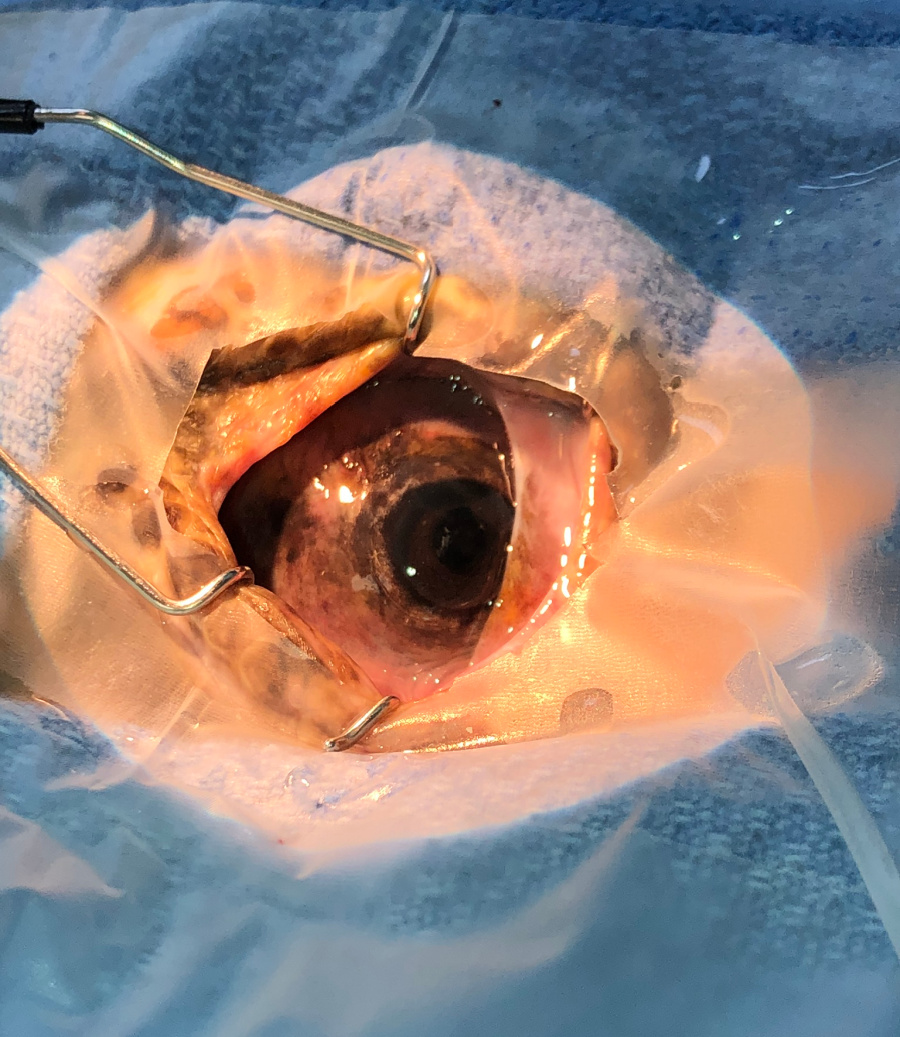Imagine gliding through the ocean, just below the water’s surface. Your vision, clear and sharp, allows you to peer out into the open sea at long distances. Passing through the filtered rays of sunlight, your head breaks the surface for a breath of air. Up here, you’re a bit shortsighted; your vision is foggier and less precise.
You drop back beneath the water line. Those beams of warm light are growing weaker by the minute as sunlight gives way to moonlight. The world above shifts into night. Diving deeper for food, the waters around you grow darker and darker as you descend. You spot a glow in the inky depths and move steadily toward it, ultimately snatching a bioluminescent jellyfish in your jaws.
This is the world through the eyes of a loggerhead sea turtle.
Eye-natomy
Now, let’s narrow our scope to the eyes themselves. Inside the eye, cells called cones detect colored light and cells called rods detect movement in dim light. Animals that see well in the dark have more rods than cones. They also have large eyes with large pupils that allow them to see well in dim light.
Though sea turtle’s eyes look large to us, they’re actually quite small in comparison to their body. They also have an even distribution of rods and cones. This means sea turtles see best in bright light. So how do they see at night or when they’re swimming in deep waters?
 Close up of a loggerhead's eye during cataract surgery.
Close up of a loggerhead's eye during cataract surgery. Photo Credit: Edisto Beach turtle patrol member, Ron Scroggy
Photo Credit: Edisto Beach turtle patrol member, Ron ScroggyEye Sea the Light
Though a sea turtle’s eyes are small in proportion to their body, their pupils are quite large. They’re also able to see near-ultraviolet, blue-green and yellow light. This allows them to detect the glow of their bioluminescent prey. Unfortunately, while this allows them to see bioluminescence and navigate using celestial light, it also makes them vulnerable to light pollution. Not only does beachfront artificial light discourage females from nesting, but it poses a serious threat to hatchlings. Hatchlings have an inborn tendency to move in the direction of natural light, and artificial beach lighting will often misguide them away from the ocean.
On the flip side, sea turtles are not sensitive to light in the orange to red range of the visible spectrum. This is why beachgoers are encouraged to use red flashlights when exploring at night.
It’s a Colorful World
And finally, the answer to the number one question posed about every animal’s eyesight: Do sea turtles see in color? The answer is… yes! Sea turtles have the photoreceptor cells necessary to see in color, but not many behavioral studies have been done to test whether they can actually distinguish the colors they see.
Have you heard about our Sea Turtle 101 series? Check it out to discover facts about sea turtles, including specifics on the three main species we treat in our Sea Turtle Care Center™.
Published March 16, 2022


